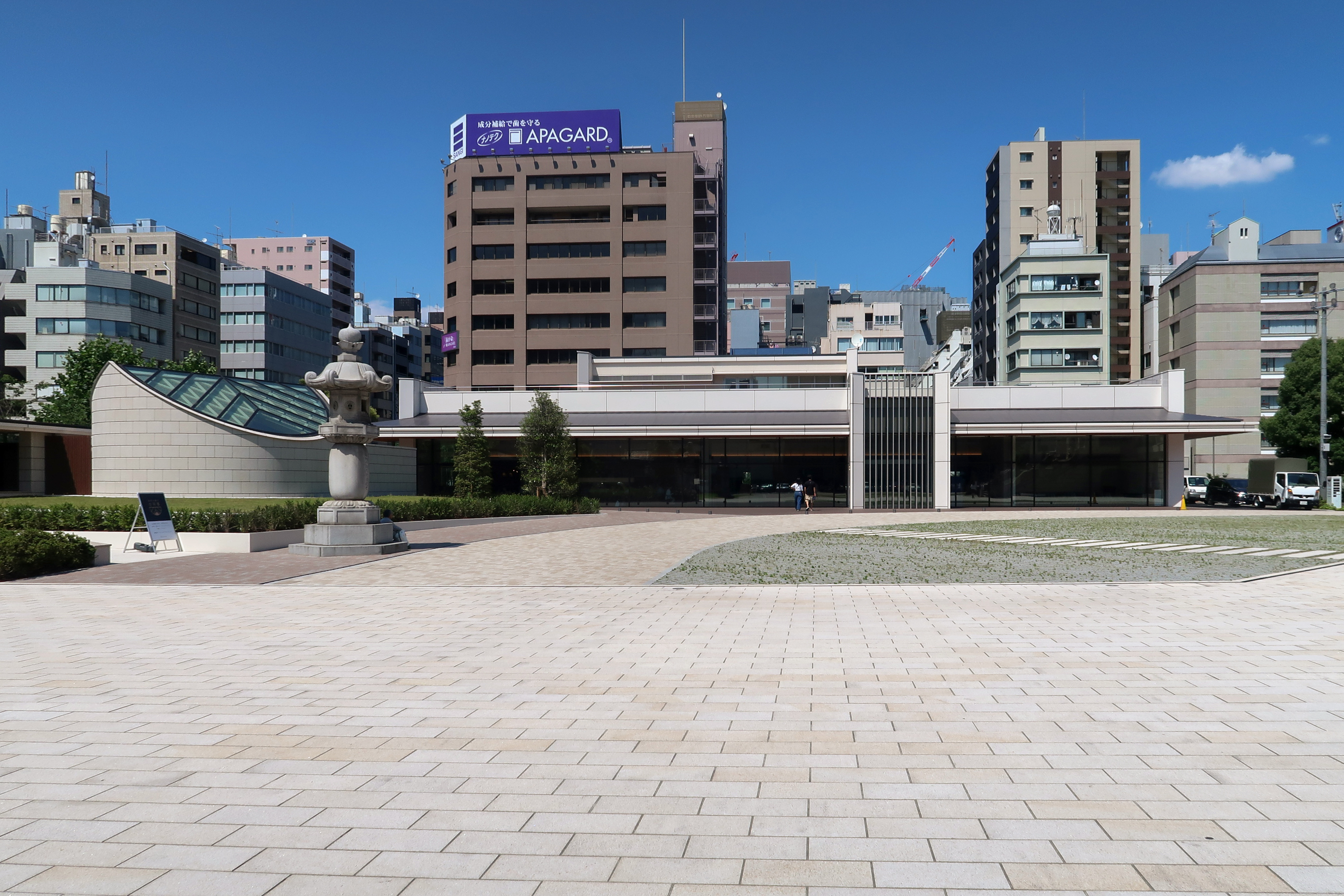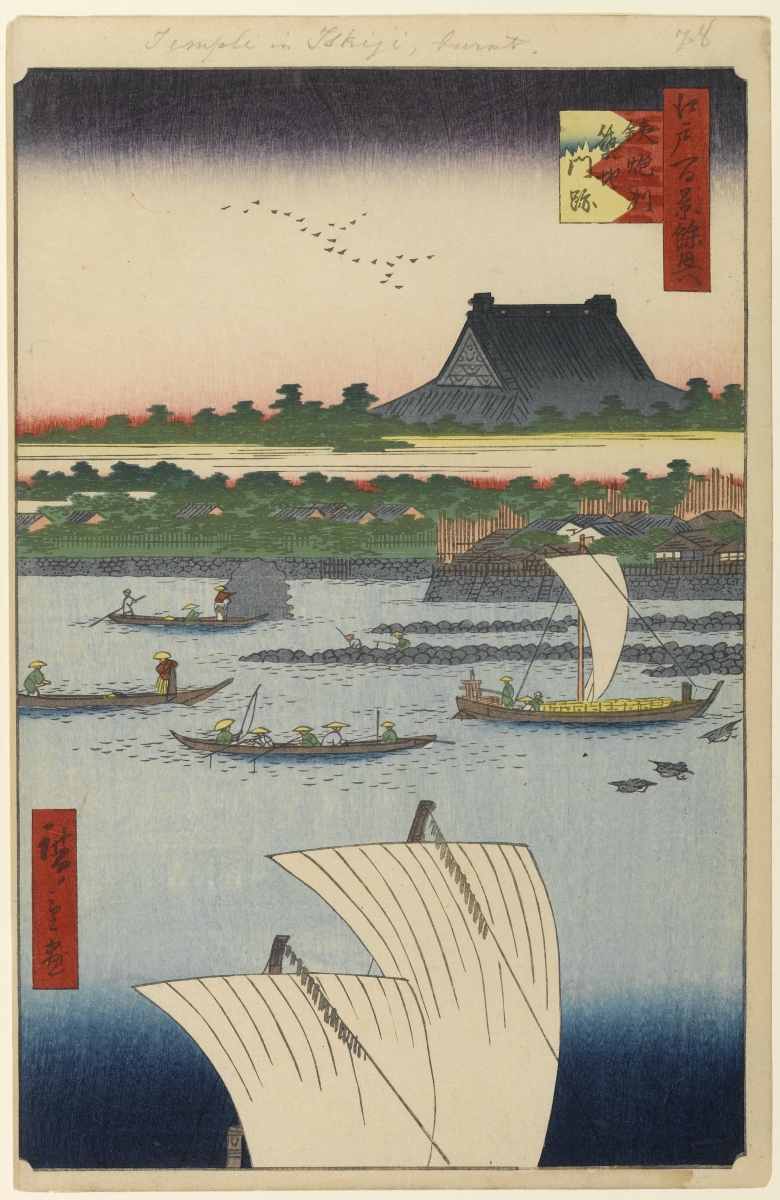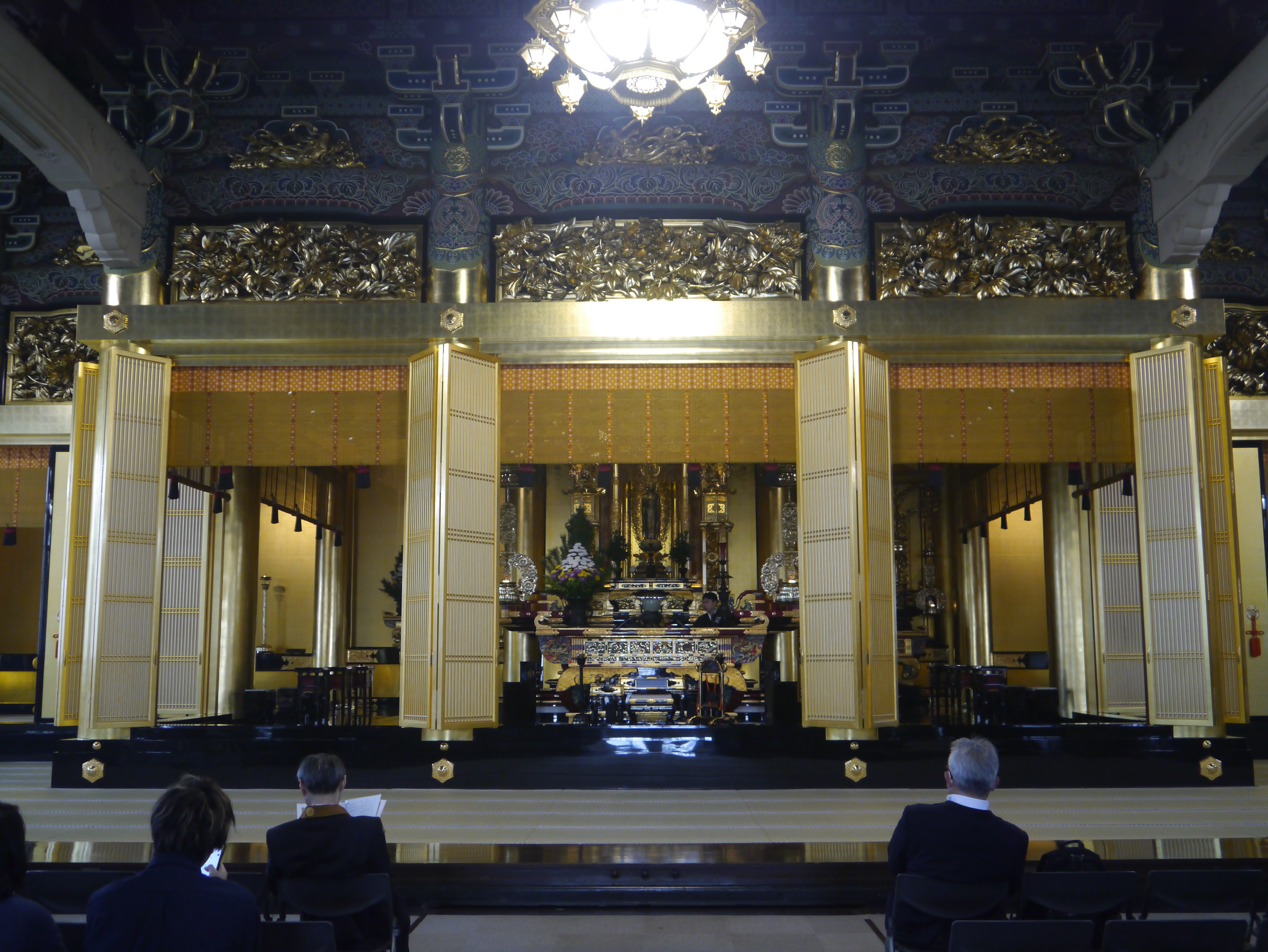Tsukiji Honganji on:
[Wikipedia]
[Google]
[Amazon]


 , sometimes archaically romanized ''Hongwan-ji'', is a Jodo Shinshu Buddhist temple located in the Tsukiji district of Tokyo,
, sometimes archaically romanized ''Hongwan-ji'', is a Jodo Shinshu Buddhist temple located in the Tsukiji district of Tokyo,
 Tsukiji Hongan-ji's predecessor was the temple of Edo-Asakusa Gobo (江戸浅草御坊), built in Asakusa in 1617 at the behest of the 12th
Tsukiji Hongan-ji's predecessor was the temple of Edo-Asakusa Gobo (江戸浅草御坊), built in Asakusa in 1617 at the behest of the 12th  Hongan-ji is a pilgrimage destination due to its artifacts of
Hongan-ji is a pilgrimage destination due to its artifacts of
Official website
{{Authority control Buddhist temples in Tokyo Buildings and structures in Chūō, Tokyo Shinshū Honganji-ha temples Tsukiji


 , sometimes archaically romanized ''Hongwan-ji'', is a Jodo Shinshu Buddhist temple located in the Tsukiji district of Tokyo,
, sometimes archaically romanized ''Hongwan-ji'', is a Jodo Shinshu Buddhist temple located in the Tsukiji district of Tokyo, Japan
Japan ( ja, 日本, or , and formally , ''Nihonkoku'') is an island country in East Asia. It is situated in the northwest Pacific Ocean, and is bordered on the west by the Sea of Japan, while extending from the Sea of Okhotsk in the north ...
.
The temple is adjacent to Tsukiji Station
is a subway station on the Tokyo Metro Hibiya Line in Tsukiji, Chūō, Tokyo, Japan, operated by the Tokyo subway operator Tokyo Metro.
Lines
Tsukiji Station is served by the Hibiya Line, and is numbered H-11. It is located 10.7 km from t ...
on the Tokyo Metro Hibiya Line.
History
 Tsukiji Hongan-ji's predecessor was the temple of Edo-Asakusa Gobo (江戸浅草御坊), built in Asakusa in 1617 at the behest of the 12th
Tsukiji Hongan-ji's predecessor was the temple of Edo-Asakusa Gobo (江戸浅草御坊), built in Asakusa in 1617 at the behest of the 12th monshu
The Monshu (門主), or ''keeper of the gate'' is a term sometimes used in Japanese Buddhism to denote the head of a monastery, as in the case of Jōdo-shū and Tendai Buddhism, but in the case of the Nishi Hongan-ji sub-sect of Jōdo Shinshū Bu ...
, Junnyo Shōnin.English-language pamphlet from Tsukiji Hongan-ji
The temple burned during a citywide fire in 1657, and the shogunate
, officially , was the title of the military dictators of Japan during most of the period spanning from 1185 to 1868. Nominally appointed by the Emperor, shoguns were usually the de facto rulers of the country, though during part of the Kamakur ...
refused to allow it to be rebuilt in Asakusa due to a prior project there. Instead, the temple was moved to a new parcel of land being reclaimed along the Sumida River
The is a river that flows through central Tokyo, Japan. It branches from the Arakawa River at Iwabuchi (in Kita-ku) and flows into Tokyo Bay. Its tributaries include the Kanda and Shakujii rivers.
It passes through the Kita, Adachi, Arakaw ...
—today's Tsukiji. This land was said to have been reclaimed by Jodo Shinshu followers themselves who lived at nearby Tsukudajima. The name ''Tsukiji'' comes from the kanji characters meaning "reclaimed land". This new temple, named Tsukiji Gobo (築地御坊), stood until it was leveled by the Great Kantō earthquake
Great may refer to: Descriptions or measurements
* Great, a relative measurement in physical space, see Size
* Greatness, being divine, majestic, superior, majestic, or transcendent
People
* List of people known as "the Great"
*Artel Great (born ...
of 1923.
The present Tsukiji Hongan-ji was designed by Itō Chūta
was a Japanese architect, architectural historian, and critic. He is recognized as the leading architect and architectural theorist of early 20th-century Imperial Japan.
Biography
Second son of a doctor in Yonezawa, present-day Yamagata Prefectu ...
of the University of Tokyo and built between 1931 and 1934. It is noted for its unique architecture, influenced by temples in India.
 Hongan-ji is a pilgrimage destination due to its artifacts of
Hongan-ji is a pilgrimage destination due to its artifacts of Prince Shotoku
A prince is a male ruler (ranked below a king, grand prince, and grand duke) or a male member of a monarch's or former monarch's family. ''Prince'' is also a title of nobility (often highest), often hereditary, in some European states. The ...
, Shinran Shonin, and Shonyō Shōnin. Shonyō Shōnin (1911-2002), the 23rd monshu
The Monshu (門主), or ''keeper of the gate'' is a term sometimes used in Japanese Buddhism to denote the head of a monastery, as in the case of Jōdo-shū and Tendai Buddhism, but in the case of the Nishi Hongan-ji sub-sect of Jōdo Shinshū Bu ...
is enshrined to the left of the main altar in honor of his contributions to the spreading the Jodo Shinshu teachings abroad so that followers would not be in "name only".
The wake of Hiroaki Shukuzawa
was a Japanese rugby union player and coach, who coached the Japan national rugby union team between 1989 and 1991. As a player, he was capped three times by Japan as a scrum-half, and he also advised the Japan Rugby Football Union. He also h ...
was held there on June 22, 2006, and a memorial to popular rock musician Hideto Matsumoto
, known professionally as hide, was a Japanese musician, singer-songwriter and record producer. He achieved international fame as the lead guitarist of the rock band X Japan from 1987 to 1997 and a solo artist from 1993 onward. He also formed ...
, better known as ''hide'', can be found in the main hall itself, as the temple was the site of the musician's funerary ceremony in 1998.
See also
* Hongan-ji Nagoya Betsuin, which has architectural resemblance * Glossary of Japanese Buddhism for an explanation of terms concerning Japanese Buddhism, its art, and temple architecture. * Statue of Shinran, TokyoReferences
External links
Official website
{{Authority control Buddhist temples in Tokyo Buildings and structures in Chūō, Tokyo Shinshū Honganji-ha temples Tsukiji